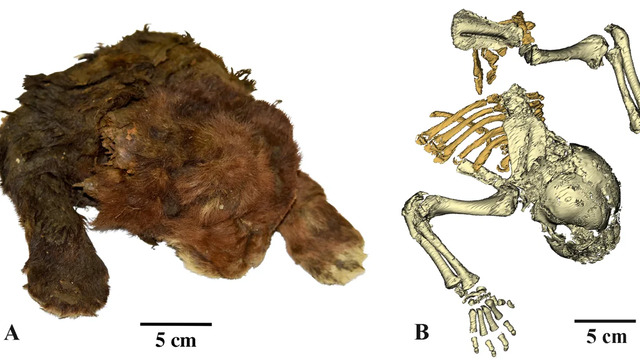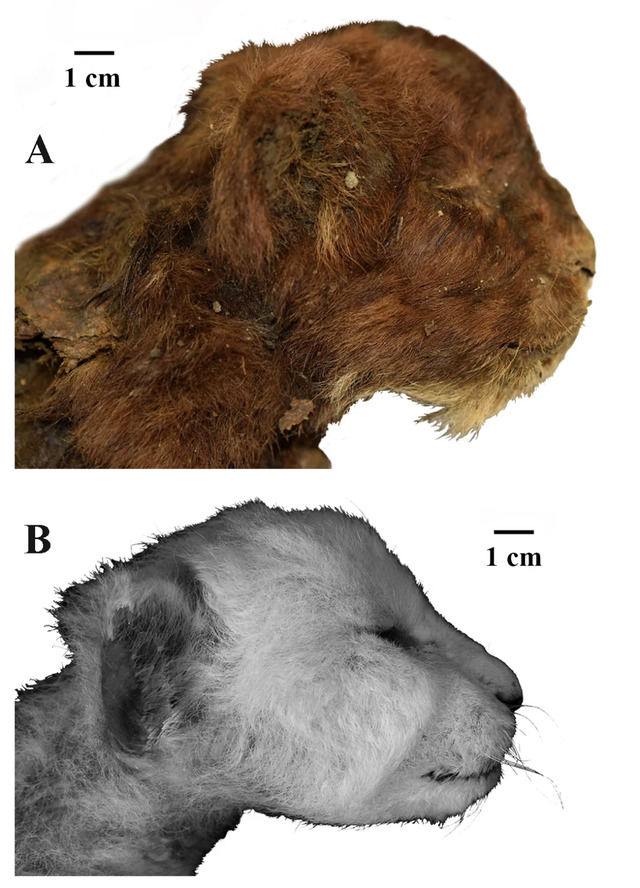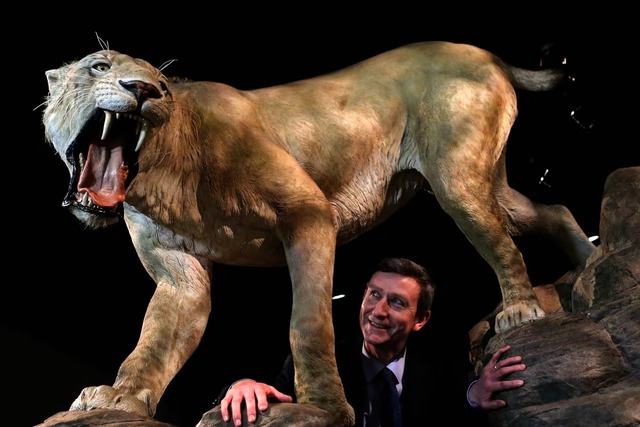In the icy expanse of Siberia’s Yakutia region, a remarkable discovery has thrilled paleontologists worldwide—a 35,000-year-old mummified saber-toothed cat cub. Encased in permafrost for millennia, this Homotherium latidens cub offers an unprecedented glimpse into the Ice Age world. Its intact fur, skin, and claws reveal details about the species’ anatomy, hunting adaptations, and evolutionary history, making it a groundbreaking find in paleontology.
The Discovery: Unearthing an Ice Age Treasure
The mummified cub was unearthed in 2020 near the Badyarikha River in Siberia by Yakutian diggers prospecting for mammoth tusks. Preserved in Siberian permafrost, the cub’s exceptional condition stunned scientists. Radiocarbon dating revealed its age to be over 35,000 years, placing it in the late Pleistocene epoch.

Unlike many other frozen specimens from the region, such as woolly mammoths and rhinos, mummified cats are exceedingly rare. Before this discovery, only two cave lion cubs from the Uyandina River basin in Yakutia had been found. This makes the Homotherium cub the first mummified saber-toothed cat of its kind.

Video
Unveil the mystery of a Sabre-Toothed Cat mummy found frozen in ice – watch the video to explore this astonishing discovery!
Physical Features: A Closer Look at the Cub
The Homotherium cub is a treasure trove of information. Its short but dense fur, dark brown in color, measures 0.8 to 1.2 inches, offering insight into how these predators adapted to the frigid Ice Age environment. The cub’s face, torso, and forelimbs are nearly intact, with claws and fleshy paw pads—fondly called “beans” by modern cat lovers—still preserved.

The cub’s anatomy sets it apart from modern big cats. It had smaller ears, a larger mouth opening, and a robust neck. Its forelimbs were longer and more muscular, while its paws resembled those of a bear, hinting at their role in hunting and immobilizing prey. The oversized upper lip, more than twice the height of a lion cub’s, likely served to cover the saber-like canines that would have grown as the cat matured.
Saber-Toothed Cat vs. Modern Big Cats
The Homotherium latidens cub provides a fascinating comparison to modern lion cubs. Its physical differences suggest unique adaptations that set saber-toothed cats apart as specialized predators. The robust forearms and larger paws likely played a crucial role in their hunting style, stabilizing prey while their saber-like canines delivered precise, fatal bites.

This find challenges previous assumptions about saber-toothed cat anatomy. Until now, researchers relied on fossilized bones and 3D models to hypothesize how these predators hunted. Seeing these adaptations “in the flesh” confirms theories that their forelimbs were integral to their predatory strategies, complementing their iconic teeth.

Evolutionary Significance
The Homotherium genus occupies a unique branch on the feline evolutionary tree. Prior genetic studies indicate that this lineage diverged from other cats around 18 million years ago. The mummified cub represents a critical piece of this evolutionary puzzle, providing direct evidence of the species’ anatomy and lifestyle.
Frozen in time, the cub sheds light on how saber-toothed cats adapted to Ice Age conditions, surviving in a harsh, competitive environment. Its discovery also underscores the diversity of feline evolution, with Homotherium occupying a niche distinct from that of modern big cats.
Broader Implications for Ice Age Research
Siberia’s permafrost has long been a goldmine for Ice Age discoveries, yielding everything from woolly mammoths to woolly rhinos. The Homotherium cub adds a new dimension to this repository, offering insights into a predator that once roamed the frozen landscapes alongside these iconic herbivores.
The preservation of soft tissues in the cub opens doors to future research. Extracting DNA could reveal details about its genetic makeup, while further examination of its muscles and skeleton might refine our understanding of its hunting techniques and ecological role.
The Impact of the Find

For scientists, the discovery of the Homotherium cub is nothing short of revolutionary. Paleontologist Jack Tseng described it as a “treasure trove of information,” emphasizing the rarity of finding both bones and soft tissue in such exceptional condition. The cub represents a tangible connection to a long-extinct world, making the Ice Age feel more real and immediate than ever before.
Beyond its scientific significance, the cub has captured the imagination of the public. Its preservation allows people to visualize a predator that has been extinct for tens of thousands of years, bridging the gap between science and storytelling.
Conclusion
The discovery of the mummified saber-toothed cat cub is a milestone in paleontology. Encased in Siberian permafrost for 35,000 years, it provides an unparalleled glimpse into the anatomy, lifestyle, and evolution of Homotherium latidens. As researchers continue to study this extraordinary specimen, it promises to deepen our understanding of Ice Age ecosystems and the evolutionary history of felines.
This find reminds us of the power of preservation and the stories hidden within the ice, waiting to be uncovered. In the frozen expanse of Siberia, the past comes alive, offering clues to a world long gone but never forgotten.
